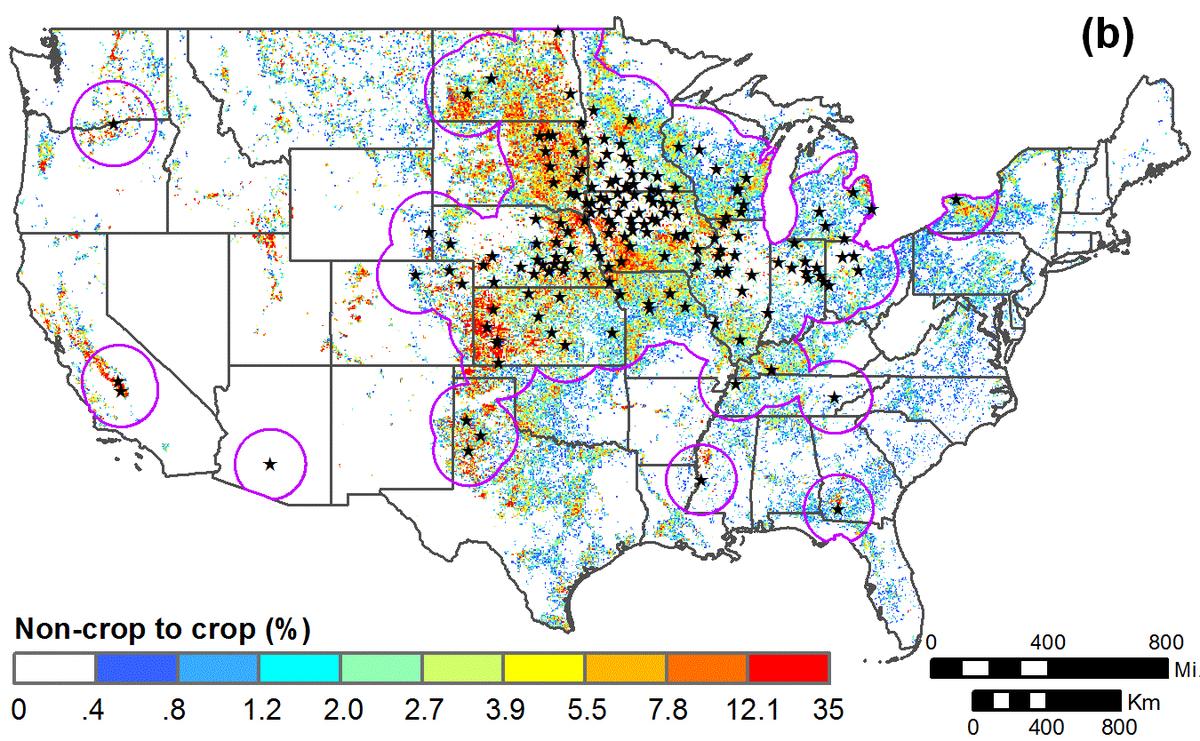In 2008, the Renewable Fuel Standard set a goal for the U.S. to produce 15 billion gallons of conventional biofuels to supplement fossil fuels. That goal was reached in 2016 and with the expansion of the industry came new ethanol refineries and more demand for corn.
That demand resulted in nearly 4.2 million acres of land being converted to cropland from 2008 to 2012 during the peak of ethanol expansion, according to research published in the journal Environmental Research Letters this month. Ecologist Christopher Wright from the Natural Resources Research Institute worked with researchers from the National Wildlife Foundation and the University of Wisconsin-Madison in the first national assessment of the impact of growing demand for corn on the landscape.
“If there’s a net shift in grass pastures or native prairies to corn, there will likely be associated landscape impacts, like increased water runoff and reduced land connectivity for wildlife,” said Wright. “It also impacts the atmosphere, potentially turning lands that are carbon sinks into carbon sources.”
The Renewable Fuel Standard was implemented under the Energy Independence and Security Act of 2007 with the intent of reducing U.S. dependence on foreign oil and to reduce greenhouse gas emissions associated with climate change.
The largest impact, according to the study, is not in heart of corn country – southern Minnesota and Iowa – but in the periphery of that core, the Dakotas, Kansas, Missouri, and Nebraska.
Of particular interest is the conversion of Conservation Reserve Program (known as CRP) lands and native prairies that provide habitat for many species and improve water quality. The paper points to the need for a more comprehensive monitoring system to assess whether the Renewable Fuel Standard is having the intended effect of reducing greenhouse gases.
“I think if we’re going to have a strategy for climate change mitigation through widespread manipulation of the landscape, we need to do the monitoring and accounting that would allow policymakers to consider potential mid-course corrections,” said Wright.
NRRI Executive Director Rolf Weberg says this is an excellent example of the institute’s role in providing data for sustainable planning.
“Informed decision-making is vital as we enter the era of cellulosic biofuels with much greater potential to reduce the carbon footprint of our transportation sector,” said Weberg. “NRRI plans to keep moving research forward to develop renewable fuels from a variety of resources.”
Full text of the research paper can be read HERE. This research is funded by the National Science Foundation, Macrosystems Biology program. The University of Minnesota Duluth’s NRRI delivers research solutions to balance the economy, resources and environment for resilient communities.
